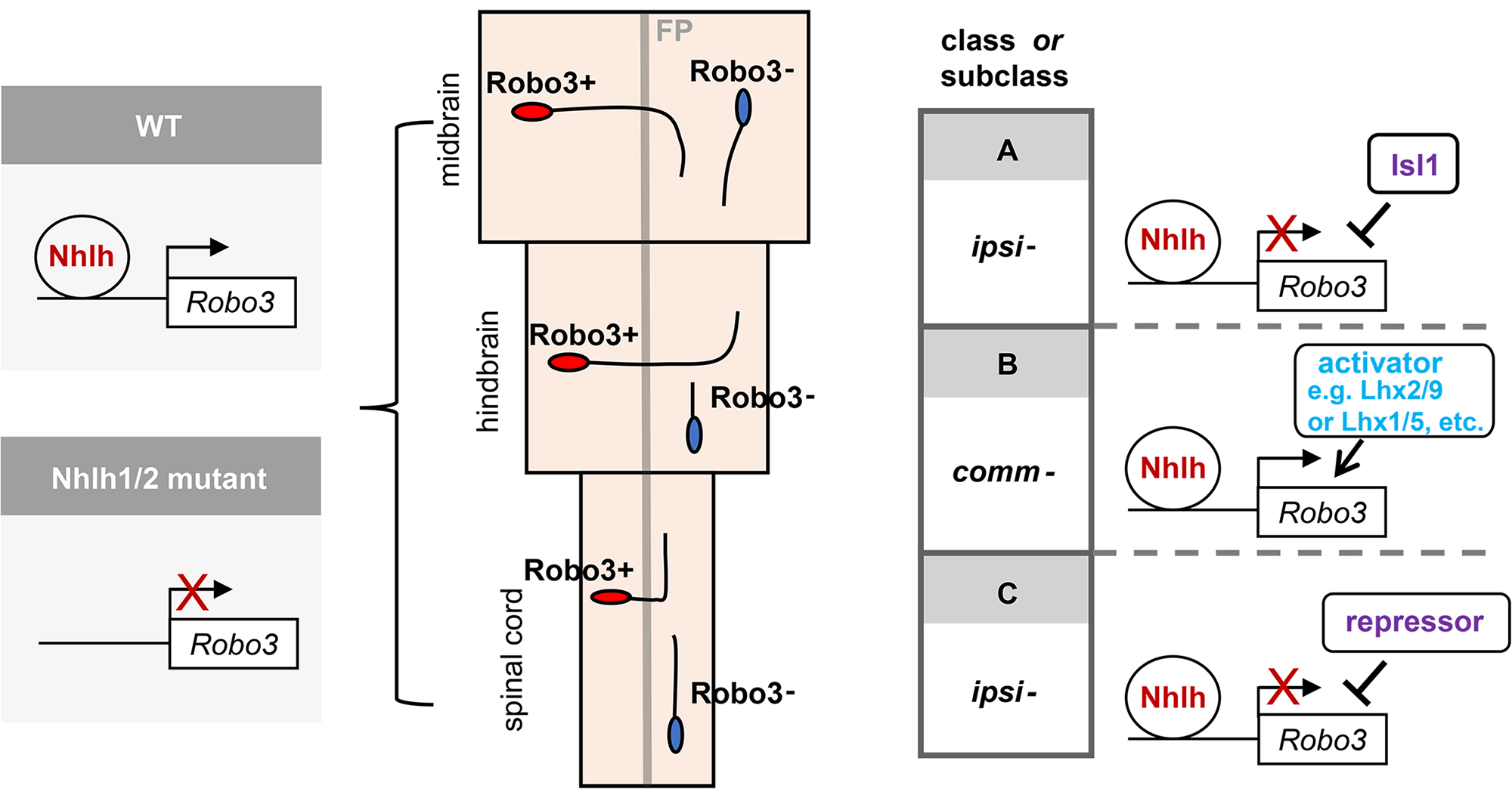A conserved gene regulatory network tells neurons to send axons across the midline
Hirata Group / Brain Function Laboratory
A conserved gene regulatory network tells neurons to send axons across the midline
Aki Masuda, Kazuhiko Nishida, Rieko Ajima, Yumiko Saga, Marah Bakhtan, Avihu Klar, Tatsumi Hirata, Yan Zhu*
* Corresponding author
Science Advances (2024) 10, eadk2149 DOI:10.1126/Sciadv.adk2149
All neurons can be divided into two types: those that send their axons across the midline (commissural), and those that do not (ipsilateral). This binary division takes place broadly across heterogenous classes of neurons. To date, very little is known of the nature of the genetic program(s) that drives this axon laterality-based division. In this study, we have uncovered an evolutionarily conserved gene regulatory mechanism, involving a pair of basic helix-loop-helix transcription factors Nhlh1/2, that is essential for the specification of all floor plate-crossing commissural neurons from the spinal cord to the midbrain. We have further shown that this global mechanism is regulated regionally by neuron class determinants to achieve specificities of the commissural and ipsilateral division. Our work has shed light on a molecular strategy in which an interplay between a globally-acting program and the lineage-based regional programs controls a common trait shared across heterogenous neuronal classes.

Figure1: Complete lack of axons crossing the midline of the neural tube in Nhlh1/2 double mutant mice.

Figure2: Transcription factors Nhlh1/2 bind to an enhancer region of the guidance receptor Robo3 and activate its transcription. Depletion of Nhlh1/2 results in a large reduction of Robo3 expression and consequentially failure of axons crossing the midline of the neural tube. The activity of Nhlh1/2 is refined by neuronal class or subclass specific regulators, such as Isl1, and possibly Lhx family members.















